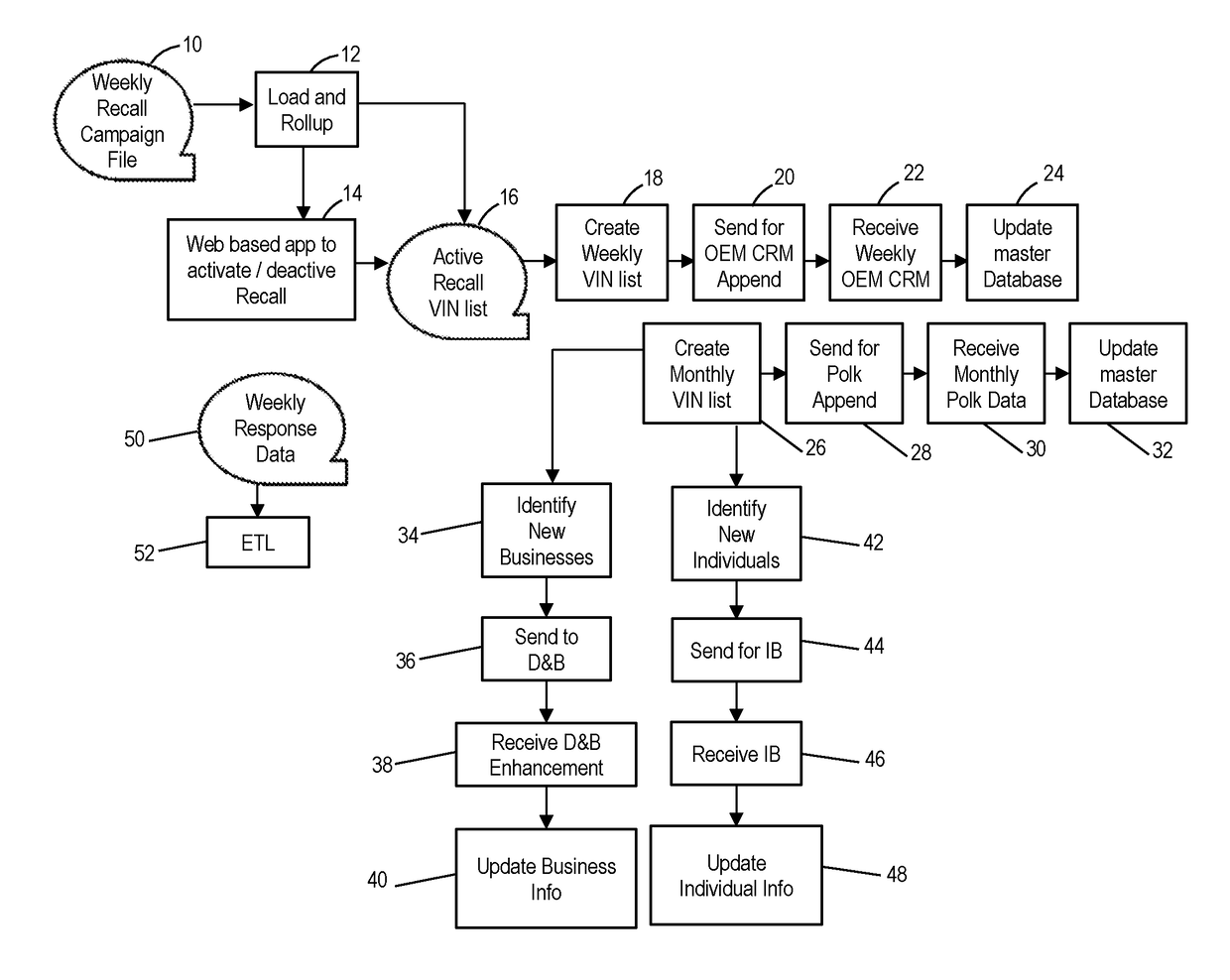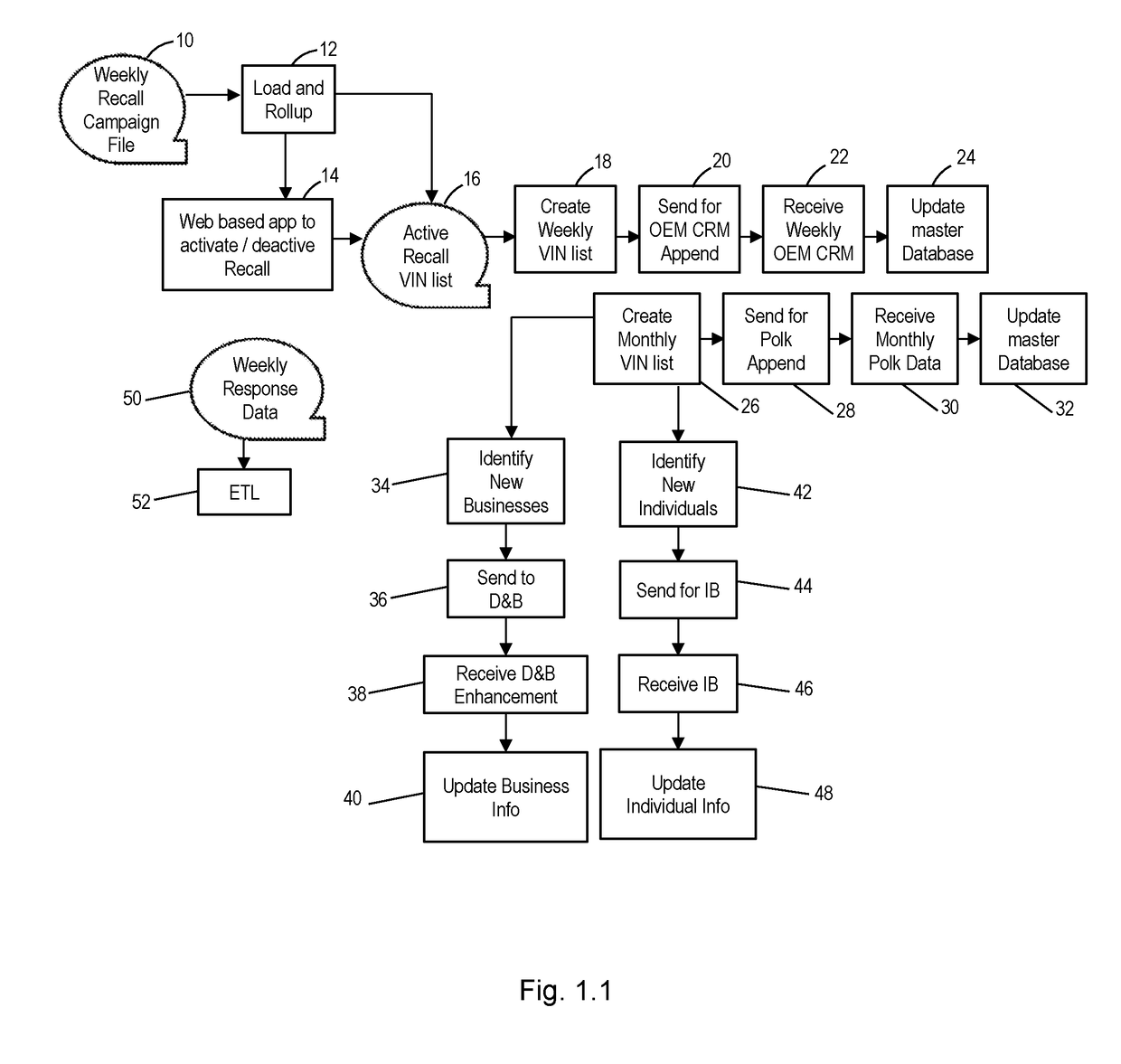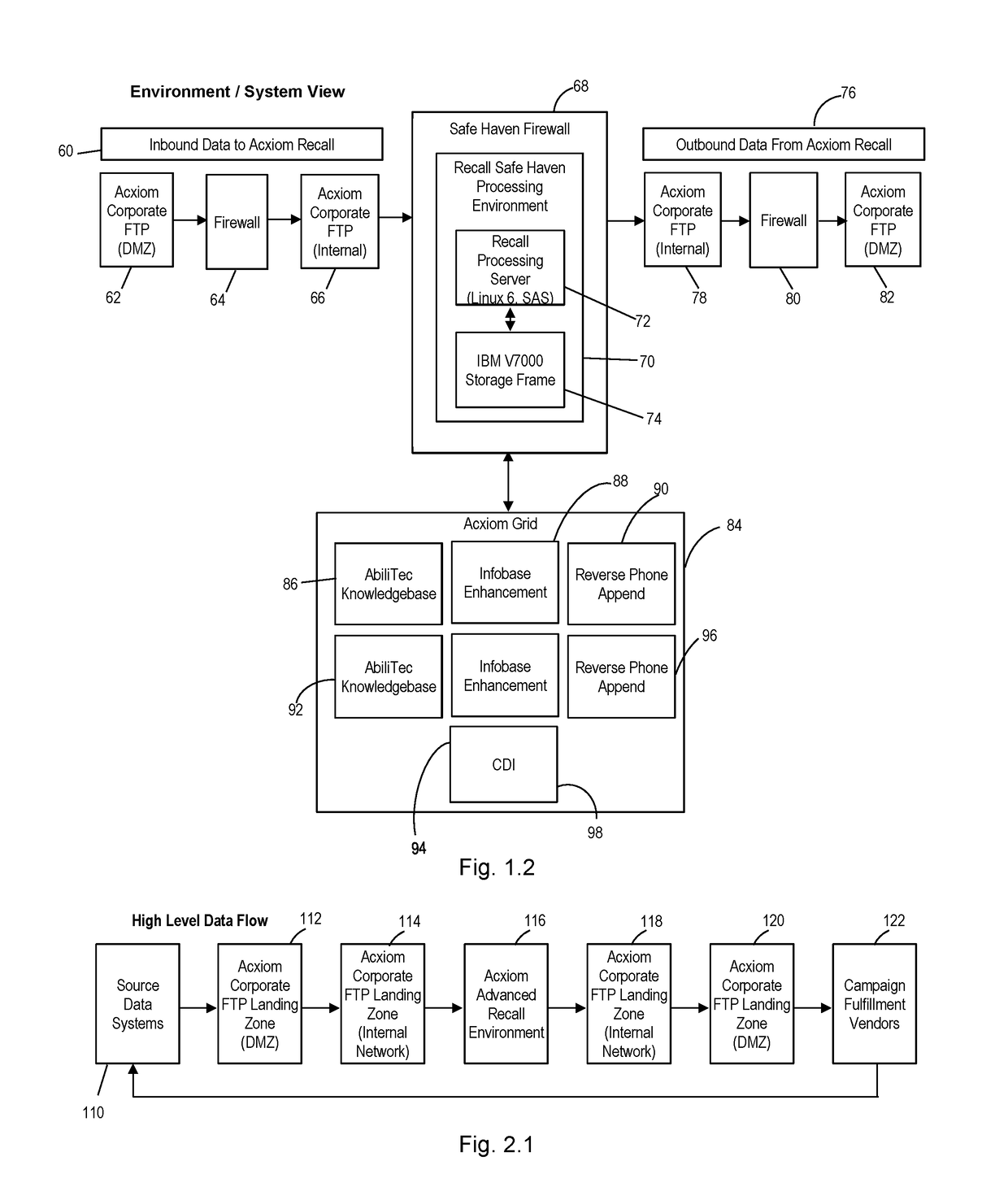Automotive Recall System and Method
a technology for autos and vehicles, applied in the field of automotive recall systems and methods, can solve the problems of reducing the efficiency of the vehicle, affecting the performance of the vehicle, and affecting the safety of the driver, so as to improve the efficiency of the workforce, optimize the effect of results, and increase the available tim
- Summary
- Abstract
- Description
- Claims
- Application Information
AI Technical Summary
Benefits of technology
Problems solved by technology
Method used
Image
Examples
Embodiment Construction
[0039]In FIG. 1.1, an overview of a process flow for managing a recall using a system according to an embodiment of the invention is illustrated. A web-based application 14 is used by the OEM to activate or deactivate a particular recall. Once activated, active recall VIN list 16 is used to identify those vehicles subject to the recall. Active recall VIN list 16 includes a VIN, recall ID, and repair date (if a recall has been repaired already). This list 16 is developed from receiving the weekly recall campaign file 10 and performing load and rollup process 12. The rollup is accessed, as will be described following, via the recall management and execution UI through the web-based application 14. Weekly response data 50 is fed to an extract, transform, and load (ETL) process 52, where it is ingested into the system and used in the feedback loop aspect of the system as described herein.
[0040]Each week, active recall VIN list 16 is posted to the system; the active recall VIN list produ...
PUM
 Login to View More
Login to View More Abstract
Description
Claims
Application Information
 Login to View More
Login to View More - R&D
- Intellectual Property
- Life Sciences
- Materials
- Tech Scout
- Unparalleled Data Quality
- Higher Quality Content
- 60% Fewer Hallucinations
Browse by: Latest US Patents, China's latest patents, Technical Efficacy Thesaurus, Application Domain, Technology Topic, Popular Technical Reports.
© 2025 PatSnap. All rights reserved.Legal|Privacy policy|Modern Slavery Act Transparency Statement|Sitemap|About US| Contact US: help@patsnap.com



